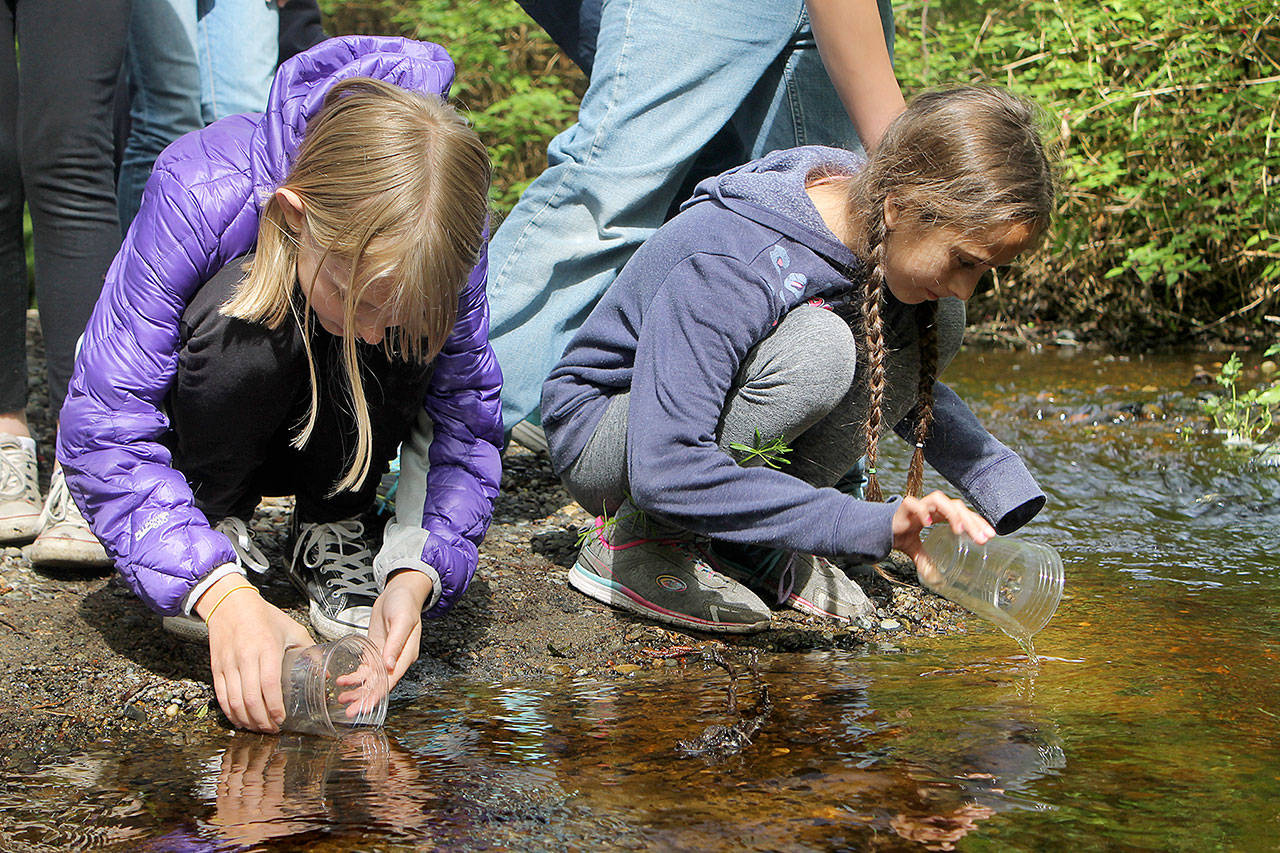Audrey Gmerek knew for months that this spring’s Salmon in the Classroom Project would end with her releasing fry into Maxwelton watershed, yet she still felt sad to part ways with the little guys Monday morning.
Ultimately, though, she knew it was for the best. She and about two dozen other fifth grade students emptied plastic cups carrying salmon fry into the Maxwelton watershed, where they will spend the next several months maturing. Though she left the stream with an empty cup, Gmerek saw things half full.
“I’m happy that they get to start a new life in the stream and the ocean,” Gmerek said. “…I remember the day I got them in their eggs and now they’re going into the stream, and soon they’ll be in the ocean in eight months or so.”
The release capped a project that began four months ago and gave students a firsthand look into the early development of a salmon, along with the ecosystem in which they live. There were 112 students in all who took part in the release, which was followed by a salmon storytelling by Jill Johnson, a longtime performer and storyteller.
The project, now in its fourth year, is run through a partnership between the Whidbey Watershed Stewards and the South Whidbey School District, as well as grant donations from the Holmes Harbor Rod and Gun Club and the South Whidbey Schools Foundations. The grant money helped pay for supplies and equipment.
In January, the students collected 250 eggs from the Washington Department of Fish and Wildlife’s Wallace River Hatchery in Sultan. Students released 234 on Monday as 16 died while the fish developed in the school’s water tank, also known as “The Chiller.”
After sending the state a report detailing how many survived and the general outcomes of students’ work, the school received a letter from the state saying that their returns were good and asked what their process was, said Lori O’Brien, Whidbey Watershed Steward education coordinator. O’Brien said the credit went to the students, whose responsibilities included daily monitoring of water temperatures in the chiller, performing water analysis, tracking the salmon’s development, cleaning the tank and feeding the salmon.
It was a process O’Brien’s son, Ian O’Brien, enjoyed thoroughly.
“There’s always a lot of things you have to do,” he said. “You have to keep watching a lot.”
Ian said he’s now a more educated citizen, though he doesn’t consider himself a scientist by any means.
“It’s something that I like to do because you think of all the salmon that are going to be coming and feeding the wildlife and the people,” he said. “We’ll always have salmon if we do this.”
Gmerek also felt enlightened.
“I learned a lot of facts that I wouldn’t know about salmon in a classroom,” Gmerek said.
O’Brien said two of the main goals of the project is providing students with a chance to give back to their environment as well as the learning about how ecosystems are interconnected.
“Even if we can make small changes, if a lot of people do it, it makes a difference,” she said.
The 234 released also included a rarity — an albino salmon. It is unclear whether it or any of the tiny salmon will survive the next phase of their life. O’Brien said that salmon typically lay up to 5,000 eggs and it is common for only two of the bunch to reach adulthood.



